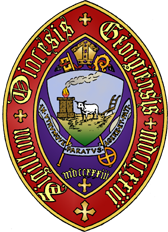Bishop Stephen Elliott, Jr. was a strong proponent of education, including women’s education. Immediately following his first diocesan convention in 1841, the new bishop traveled to Montpelier Springs near the town of Forsyth in middle Georgia to spend four days organizing a school. He left the Rev. Charles Fay as Rector of the church and school. That December, he reported that when he went back to Montpelier Springs to inspect the school and make arrangements for the winter term, “I found everything in the very best condition, full of promise to the Church and to the State.” By the spring of 1842, he could say, “Our Schools have flourished at the Springs beyond our most sanguine expectation.”
 Bishop Elliott adopted a plan inconceivable today as the church school was to be founded around the work of enslaved Africans. He wrote that this scheme had worked for many years on the island of Barbados. The Montpelier Institute, with both boys and girls schools on an 800-acre campus was to be a working farm staffed by enslaved persons. Their work was to pay the bulk of the costs of the school. He saw additional advantage for the students in studying on a farm writing, “They will also be trained in the best mode of performing their duties as the owners of slaves and the masters of human beings for whose souls they must give an account.”
Bishop Elliott adopted a plan inconceivable today as the church school was to be founded around the work of enslaved Africans. He wrote that this scheme had worked for many years on the island of Barbados. The Montpelier Institute, with both boys and girls schools on an 800-acre campus was to be a working farm staffed by enslaved persons. Their work was to pay the bulk of the costs of the school. He saw additional advantage for the students in studying on a farm writing, “They will also be trained in the best mode of performing their duties as the owners of slaves and the masters of human beings for whose souls they must give an account.”
Elliott said, “It is neither numbers, nor profit, nor popularity which we seek. Our desire is to give a finished education upon strictly religious principles, and everything else will be sacrificed to that object.”
The girls were taught in Lamar Hall, the boys were a mile distant in Chase Hall, named for Bishop Philander Chase, the Presiding Bishop of The Episcopal Church. Elliott recruited faculty from England, with every effort being made as Elliott would say to assure that “whatever is taught, will be thoroughly taught.”
 By 1846, Elliott was living on the school grounds and reported that he had accomplished more Bishop’s visits in the previous year than in the years before moving to centrally-located Institute. By that time, more than 80 students were enrolled in the two schools which formed the Montpelier Institute. The rapid expansion of the school including the completion of more buildings amassed debt. Never funded by the Diocese, Elliott used his personal property, including “human capital” of enslaved persons, as a guarantee. In 1850, Elliott lost everything he owned. He sold all of his land and his considerable holdings in enslaved persons to satisfy the school’s creditors.
By 1846, Elliott was living on the school grounds and reported that he had accomplished more Bishop’s visits in the previous year than in the years before moving to centrally-located Institute. By that time, more than 80 students were enrolled in the two schools which formed the Montpelier Institute. The rapid expansion of the school including the completion of more buildings amassed debt. Never funded by the Diocese, Elliott used his personal property, including “human capital” of enslaved persons, as a guarantee. In 1850, Elliott lost everything he owned. He sold all of his land and his considerable holdings in enslaved persons to satisfy the school’s creditors.
In 1851, the Diocese raised a salary for him for the first time. He was paid $2,500, which is $85,000 in 2022 dollars. Yet this was a step down for the wealthy bishop and his family. In December 1852 Bishop Elliott, now broke save for his salary as bishop, moved back to Savannah to take up duties as Rector of Christ Church in addition to serving as Bishop.
Pictured above: The Rt. Rev. Stephen Elliott, (above) and the historic marker for Montpelier Institute (below).
